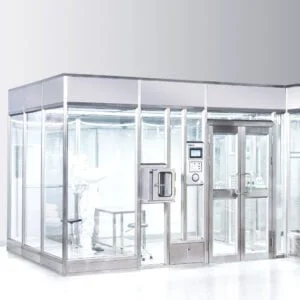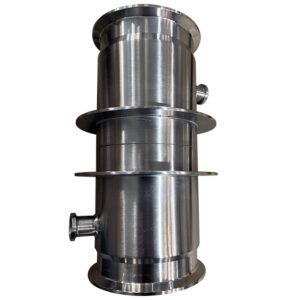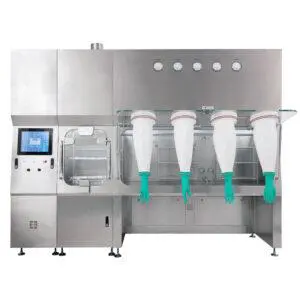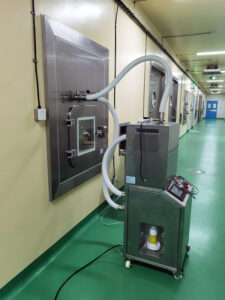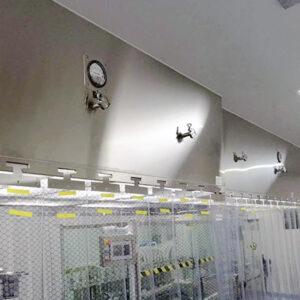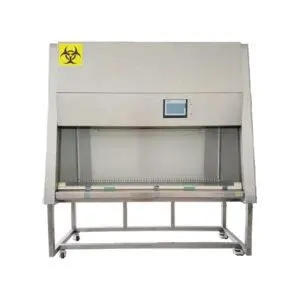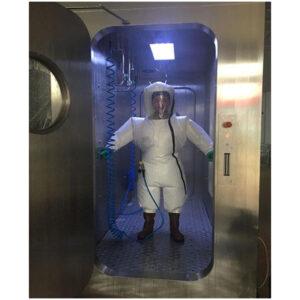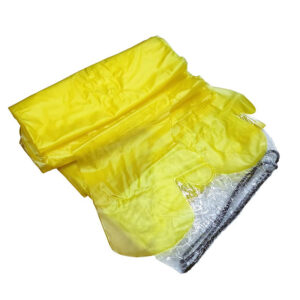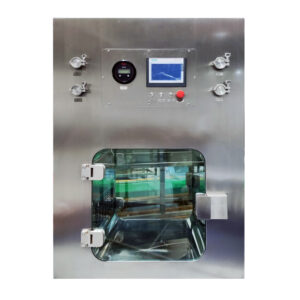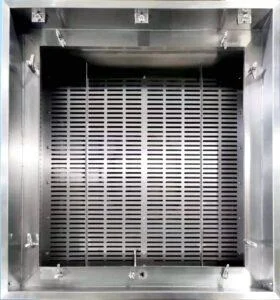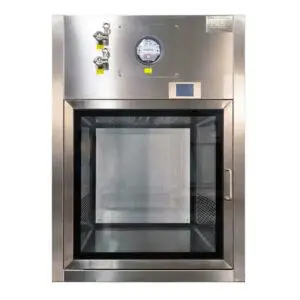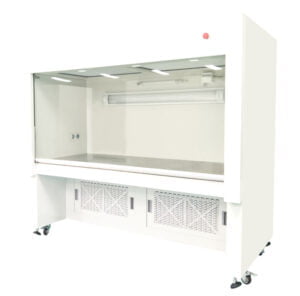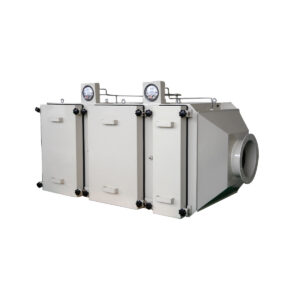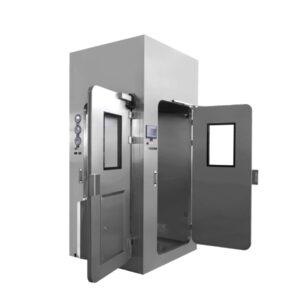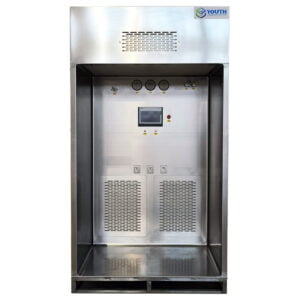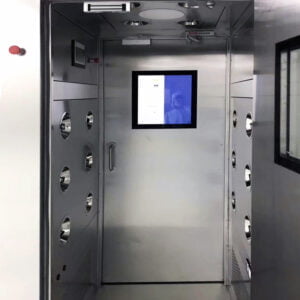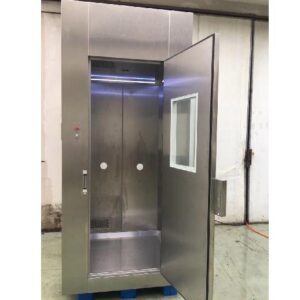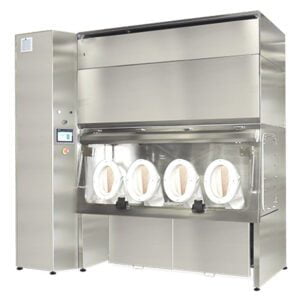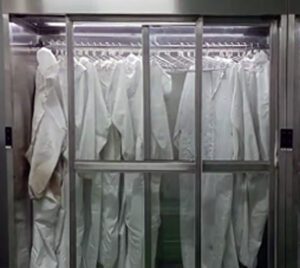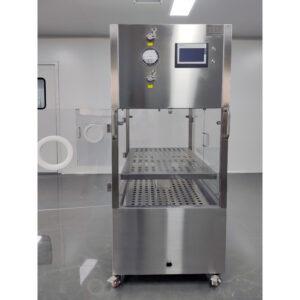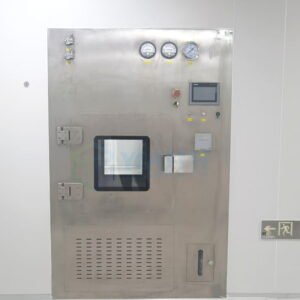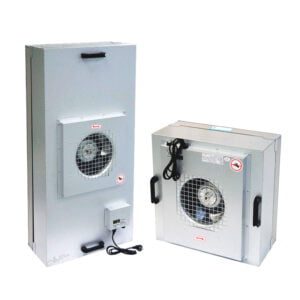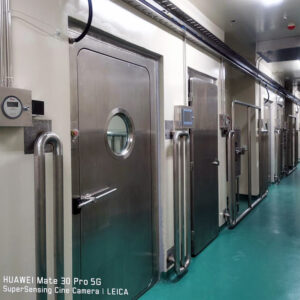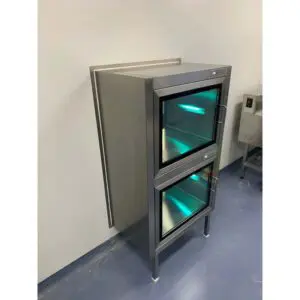In the realm of industrial safety, the importance of well-designed water supply systems for chemical showers cannot be overstated. These critical safety installations serve as the first line of defense against chemical exposure, providing immediate decontamination for workers in hazardous environments. As industries evolve and safety standards become more stringent, the design and implementation of these systems have become increasingly sophisticated.
The effectiveness of chemical showers hinges on several key factors: water quality, temperature control, flow rate, and system reliability. Each of these elements plays a crucial role in ensuring that the shower can effectively rinse away hazardous substances while minimizing the risk of further injury to the user. From the moment a chemical shower is activated, it must deliver a consistent, tepid water flow that meets stringent safety standards and regulatory requirements.
As we delve deeper into the intricacies of water supply systems for chemical showers, we'll explore the various components, design considerations, and best practices that contribute to a safe and effective installation. This comprehensive guide will provide valuable insights for safety engineers, facility managers, and anyone involved in the specification or maintenance of chemical shower systems.
Chemical shower water supply systems must be designed to deliver a minimum of 15 minutes of tepid water flow at a rate of 20 gallons per minute, in accordance with ANSI Z358.1 standards.
This claim underscores the fundamental requirements that form the foundation of any chemical shower installation. However, meeting these basic criteria is just the beginning. Let's explore the multifaceted aspects of designing and implementing effective water supply systems for chemical showers.
What Are the Key Components of a Chemical Shower Water Supply System?
At the heart of every chemical shower is a complex network of components working in harmony to deliver safe, effective decontamination. The water supply system is the lifeline of these safety installations, comprising several critical elements that ensure reliable operation when it matters most.
The primary components typically include a water source, pumps, storage tanks, heating and cooling systems, filtration units, and distribution piping. Each of these elements must be carefully selected and integrated to create a system that can respond instantly to emergency situations while maintaining water quality and temperature over extended periods.
One of the most crucial components in modern chemical shower systems is the temperature control unit. This device ensures that the water delivered to the shower remains within the safe "tepid" range, typically between 60°F and 100°F, as mandated by safety standards. YOUTH offers advanced temperature control solutions that can be seamlessly integrated into existing or new chemical shower installations, ensuring compliance with ANSI Z358.1 standards.
Proper sizing of water storage tanks is critical for chemical shower systems, with a minimum capacity typically calculated based on the required 15-minute flow duration plus an additional safety margin.
| Component | Function | Typical Specification |
|---|---|---|
| Water Source | Primary supply | Municipal or on-site well |
| Storage Tank | Ensures water availability | 300-500 gallon capacity |
| Pump | Maintains pressure | 20-30 GPM at 30-50 PSI |
| Heater | Warms water to tepid range | 40-80 kW capacity |
| Cooler | Cools water in hot climates | 5-10 ton cooling capacity |
| Filtration | Removes contaminants | 5-micron sediment filter |
The interplay between these components creates a robust system capable of delivering a consistent and safe shower experience in emergency situations. However, the effectiveness of the system relies heavily on proper design and integration, which leads us to our next critical consideration.
How Does System Design Impact Chemical Shower Performance?
The design of a water supply system for chemical showers is a complex process that requires careful consideration of various factors. The layout of the facility, the nature of potential chemical hazards, and environmental conditions all play crucial roles in determining the optimal system design.
One of the primary design considerations is the placement of the chemical showers themselves. They must be easily accessible, located within 10 seconds of travel time from potential hazard areas, and have clear, unobstructed paths leading to them. This requirement often necessitates a distributed water supply system, with multiple shower locations fed from a central source.
The piping layout is another critical aspect of system design. It must be configured to minimize water stagnation, which can lead to bacterial growth and compromise water quality. Recirculation systems are often employed to keep water moving and maintain the correct temperature throughout the network.
Chemical shower water supply systems should be designed with redundancy in mind, incorporating backup power sources and duplicate pumps to ensure uninterrupted operation during emergencies.
| Design Factor | Consideration | Impact on Performance |
|---|---|---|
| Shower Placement | Proximity to hazards | Rapid access in emergencies |
| Piping Layout | Minimizes stagnation | Maintains water quality |
| Redundancy | Backup systems | Ensures continuous operation |
| Flow Rate | Meets ANSI standards | Effective decontamination |
| Temperature Control | Maintains tepid range | Prevents thermal shock |
The Water supply systems for chemical showers offered by YOUTH are engineered with these design principles in mind, ensuring optimal performance and compliance with safety standards. Their systems incorporate advanced flow control and temperature regulation technologies to maintain consistent shower performance under various operating conditions.
Effective system design not only ensures compliance with safety standards but also contributes to the overall efficiency and reliability of the chemical shower installation. As we continue to explore this topic, we'll delve into the specific requirements that guide the development of these critical safety systems.
What Are the Regulatory Requirements for Chemical Shower Water Supply?
Navigating the regulatory landscape is a crucial aspect of designing and implementing water supply systems for chemical showers. These requirements are put in place to ensure the safety and effectiveness of emergency decontamination equipment across various industries.
The primary standard governing chemical shower installations in the United States is ANSI Z358.1, which provides detailed specifications for emergency eyewash and shower equipment. This standard is regularly updated to reflect the latest safety practices and technological advancements in the field.
Key requirements from ANSI Z358.1 include:
- Water flow rate of at least 20 gallons per minute for showers
- Minimum 15-minute continuous flow duration
- Delivery of tepid water (60°F to 100°F)
- Activation time of 1 second or less
- Hands-free operation once activated
In addition to ANSI standards, facilities must also comply with Occupational Safety and Health Administration (OSHA) regulations, which reference ANSI Z358.1 for specific requirements. OSHA mandates that employers provide suitable facilities for quick drenching or flushing of the eyes and body where workers may be exposed to injurious corrosive materials.
Water supply systems for chemical showers must be inspected weekly and tested annually to ensure compliance with ANSI Z358.1 standards, with detailed records maintained for regulatory audits.
| Regulatory Body | Standard/Regulation | Key Requirement |
|---|---|---|
| ANSI | Z358.1 | Tepid water delivery |
| OSHA | 29 CFR 1910.151(c) | Quick drenching facilities |
| ASSE | 1071 | Mixing valve performance |
| IAPMO | UPC Chapter 4 | Backflow prevention |
Compliance with these regulations is not just a legal obligation but a critical factor in ensuring worker safety. YOUTH's chemical shower systems are designed with these regulatory requirements at the forefront, incorporating features that facilitate easy compliance and maintenance.
As we continue to explore the intricacies of chemical shower water supply systems, it's important to consider how these regulatory standards influence system design and operation in real-world applications.
How Can Water Quality Be Maintained in Chemical Shower Systems?
Maintaining water quality in chemical shower systems is paramount to ensure the safety and effectiveness of these critical emergency installations. Stagnant water can become a breeding ground for harmful bacteria, potentially introducing additional health risks during an emergency decontamination situation.
To address this challenge, many modern chemical shower systems incorporate recirculation features. These systems continuously circulate water through the piping network, preventing stagnation and maintaining the required tepid temperature range. Recirculation also allows for continuous filtration and treatment of the water, ensuring that it remains clean and safe for use.
Filtration plays a crucial role in maintaining water quality. Multi-stage filtration systems are often employed, typically including:
- Sediment filters to remove particulate matter
- Activated carbon filters to remove chlorine and organic compounds
- UV sterilization to neutralize bacteria and other microorganisms
Regular water testing and system maintenance are essential components of a comprehensive water quality management program. This includes periodic flushing of the system, inspection of filters, and microbial testing to ensure the water meets safety standards.
Chemical shower water supply systems should incorporate automatic flushing mechanisms that activate at least weekly, circulating fresh water through the system to maintain quality and readiness.
| Water Quality Measure | Method | Frequency |
|---|---|---|
| Chlorine Residual | DPD Test | Weekly |
| pH Level | Digital pH Meter | Monthly |
| Bacterial Count | Lab Analysis | Quarterly |
| Sediment Level | Visual Inspection | Monthly |
| Total Dissolved Solids | TDS Meter | Quarterly |
YOUTH's advanced water supply systems for chemical showers incorporate state-of-the-art filtration and circulation technologies to ensure consistently high water quality. Their systems are designed for easy maintenance and monitoring, helping facilities maintain compliance with stringent water quality standards.
Maintaining water quality is not just about meeting regulatory requirements; it's about ensuring that chemical showers can perform their life-saving function effectively when called upon. As we continue our exploration of this critical topic, we'll look at how temperature control plays a vital role in chemical shower system design.
What Role Does Temperature Control Play in Chemical Shower Systems?
Temperature control is a critical aspect of chemical shower water supply systems, playing a pivotal role in both the effectiveness of decontamination and the safety of the user. The delivery of tepid water, as mandated by ANSI Z358.1, serves two essential purposes: it encourages the user to remain under the shower for the full recommended flushing time, and it prevents thermal shock which could exacerbate chemical injuries.
Achieving and maintaining the correct water temperature in chemical shower systems presents several challenges, particularly in facilities located in extreme climates. In cold environments, water must be heated to reach the tepid range, while in hot climates, cooling systems may be necessary to prevent overheating.
Modern chemical shower systems employ sophisticated temperature control mechanisms to ensure consistent water temperature delivery. These may include:
- Thermostatic mixing valves to blend hot and cold water streams
- In-line water heaters for on-demand temperature adjustment
- Recirculation systems with temperature sensors for continuous monitoring
- Chillers or heat exchangers for cooling in hot environments
Chemical shower water temperature must be maintained between 60°F and 100°F (16°C to 38°C) to comply with ANSI Z358.1 standards, with many facilities aiming for a narrower range of 70°F to 90°F for optimal user comfort and safety.
| Temperature Control Method | Advantages | Considerations |
|---|---|---|
| Thermostatic Mixing Valve | Precise control | Regular calibration needed |
| In-line Water Heater | Compact solution | High energy consumption |
| Recirculation System | Maintains temp throughout | Complex installation |
| Chiller/Heat Exchanger | Effective in extreme climates | Higher initial cost |
YOUTH's chemical shower systems incorporate advanced temperature control technologies that adapt to varying environmental conditions, ensuring consistent tepid water delivery in any climate. Their systems often feature redundant temperature control mechanisms to guarantee uninterrupted operation during emergencies.
As we continue to explore the complexities of water supply systems for chemical showers, it's clear that temperature control is just one piece of a larger puzzle. Next, we'll examine how these systems are tested and maintained to ensure they're always ready when needed.
How Are Chemical Shower Water Supply Systems Tested and Maintained?
Regular testing and maintenance of chemical shower water supply systems are crucial to ensure their reliability and effectiveness in emergency situations. A comprehensive testing and maintenance program not only helps meet regulatory requirements but also provides peace of mind that the system will function as intended when it matters most.
Testing protocols typically include:
- Weekly activation of the shower to verify proper operation and flush the system
- Monthly checks of water pressure and flow rate
- Quarterly inspection of all system components, including valves, filters, and heating/cooling elements
- Annual thorough testing of the entire system, including simulated emergency scenarios
Maintenance activities are equally important and should be performed on a regular schedule. These may include:
- Cleaning and replacing filters
- Calibrating temperature control devices
- Inspecting and repairing piping for leaks or corrosion
- Servicing pumps and other mechanical components
- Updating system software and controls, if applicable
Chemical shower water supply systems should undergo a complete annual performance test, including flow rate measurement, temperature verification, and activation time checks, with results documented and retained for at least one year.
| Test/Maintenance Task | Frequency | Responsible Party |
|---|---|---|
| Activation Test | Weekly | Safety Personnel |
| Flow Rate Check | Monthly | Maintenance Staff |
| Water Quality Test | Quarterly | Certified Lab |
| Full System Inspection | Annually | Qualified Technician |
| Filter Replacement | As needed (3-6 months) | Maintenance Staff |
YOUTH provides comprehensive maintenance and testing services for their chemical shower water supply systems, ensuring that facilities can maintain compliance with safety standards and keep their equipment in optimal condition. Their technicians are trained to perform thorough inspections and can provide detailed reports on system performance and recommendations for improvements.
Proper testing and maintenance are essential for the longevity and reliability of chemical shower systems. As we wrap up our exploration of this critical safety equipment, let's consider some final thoughts on the future of water supply systems for chemical showers.
What Are the Future Trends in Chemical Shower Water Supply Systems?
As technology advances and safety standards evolve, the future of water supply systems for chemical showers is poised for significant innovation. Emerging trends are focused on enhancing system efficiency, improving user experience, and increasing overall safety.
One of the most promising developments is the integration of smart technologies into chemical shower systems. Internet of Things (IoT) sensors and cloud-based monitoring platforms are being incorporated to provide real-time data on system performance, water quality, and usage patterns. This allows for predictive maintenance and rapid response to potential issues before they become critical.
Another trend is the development of more sustainable and energy-efficient systems. This includes the use of solar-powered heating elements, heat recovery systems, and advanced insulation techniques to reduce energy consumption while maintaining optimal water temperatures.
Advancements in materials science are also influencing the design of chemical shower components. Corrosion-resistant alloys and antimicrobial surfaces are being employed to extend system lifespan and improve hygiene.
Future chemical shower water supply systems are expected to incorporate artificial intelligence for autonomous operation and self-diagnosis, potentially reducing response times in emergencies and minimizing system downtime.
| Future Trend | Potential Impact | Timeline |
|---|---|---|
| IoT Integration | Enhanced monitoring | 1-3 years |
| Sustainable Design | Reduced energy costs | 3-5 years |
| Advanced Materials | Improved durability | 2-4 years |
| AI-driven Systems | Autonomous operation | 5-10 years |
| VR Training | Improved user readiness | 3-7 years |
YOUTH is at the forefront of these innovations, continuously developing new technologies to improve the safety and efficiency of chemical shower water supply systems. Their commitment to research and development ensures that their products remain at the cutting edge of safety technology.
As we conclude our comprehensive exploration of water supply systems for chemical showers, it's clear that these critical safety installations are far more complex than they might appear at first glance. From the intricate network of components to the stringent regulatory requirements and the ongoing maintenance needs, every aspect of these systems plays a vital role in ensuring worker safety in hazardous environments.
The design and implementation of effective water supply systems for chemical showers require a deep understanding of hydraulics, thermodynamics, materials science, and safety regulations. As industries continue to evolve and new chemical hazards emerge, these systems must adapt to meet the changing needs of workers and facilities.
Looking to the future, we can expect to see even more advanced and intelligent chemical shower systems that offer enhanced safety features, improved efficiency, and greater ease of use. However, the fundamental principle remains unchanged: to provide immediate, effective decontamination in the event of chemical exposure.
For facility managers, safety officers, and industrial planners, staying informed about the latest developments in chemical shower technology is crucial. By partnering with industry leaders like YOUTH and investing in robust, well-designed water supply systems, organizations can ensure they are providing the highest level of protection for their workers.
In the end, the goal of any chemical shower water supply system is simple yet profound: to save lives and prevent serious injuries in the face of chemical hazards. As we continue to innovate and improve these critical safety systems, we move closer to creating safer workplaces for all.
External Resources
Safety Shower Water Tempering System – HydroThrift – This resource provides detailed information on custom-designed safety shower water tempering systems, including options for cooling and heating, compliance with ANSI Z358.1, and integrated safety shower circulation systems.
Tepid Water Solutions for Safety Showers – ThermOmegaTech – This page offers various tepid water solutions for safety showers and eyewash stations, including instantaneous steam-fired water heaters and thermostatic mixing valves, all compliant with ANSI Z358.1 standards.
Emergency Showers: How to Select the Right One – Hughes Safety – This guide helps in selecting the right emergency safety showers, focusing on temperature control, compliance with ANSI Z358.1, and solutions for extreme ambient temperatures and unreliable water supplies.
Water Supply Requirements for Safety Showers and Eyewash Stations – Safety+Health Magazine – This article discusses the regulatory requirements from OSHA, ANSI, and ASSE for water quality, temperature, and flow in safety showers and eyewash stations, ensuring compliance and worker protection.
Safety Shower and Eyewash Philosophy – Eng-Tips – This discussion thread provides insights into different design approaches for safety showers and eyewash systems, including circulating systems to prevent stagnant water and ensure compliance with safety standards.
ANSI Z358.1 Standard for Emergency Eyewash and Shower Equipment – This link directs to the ANSI Z358.1 standard, which is a comprehensive guide for the selection, installation, operation, and maintenance of emergency eyewash and shower equipment.
Emergency Safety Showers and Eyewash Stations – Haws – This resource from Haws provides information on various emergency safety showers and eyewash stations, including temperature-controlled models and solutions for different environmental conditions.
Temperature Controlled Safety Showers – Bradley Corporation – Bradley Corporation offers temperature-controlled safety showers that meet ANSI Z358.1 standards, ensuring the delivery of tepid water in emergency situations across various industrial environments.
Related Contents:
- Emergency Chemical Shower Rooms: Quick Response Guide
- OSHA Chemical Shower Requirements: 2025 Compliance Guide
- Enclosed Chemical Shower Rooms: Privacy and Safety
- Top 5 Portable Chemical Shower Rooms for Labs
- Stainless Steel Chemical Shower Rooms: Durability Guide
- Outdoor Chemical Shower Rooms: Weather-Resistant Options
- Emergency Response Training: Chemical Shower Protocols
- Chemical Shower Room Maintenance: 7-Step Checklist
- Chemical Shower Room Inspection: 15-Point Checklist

